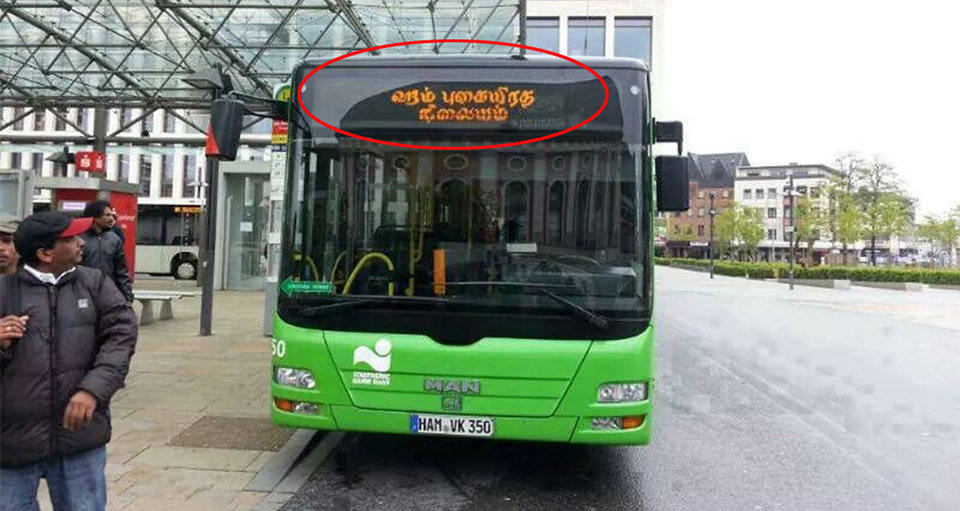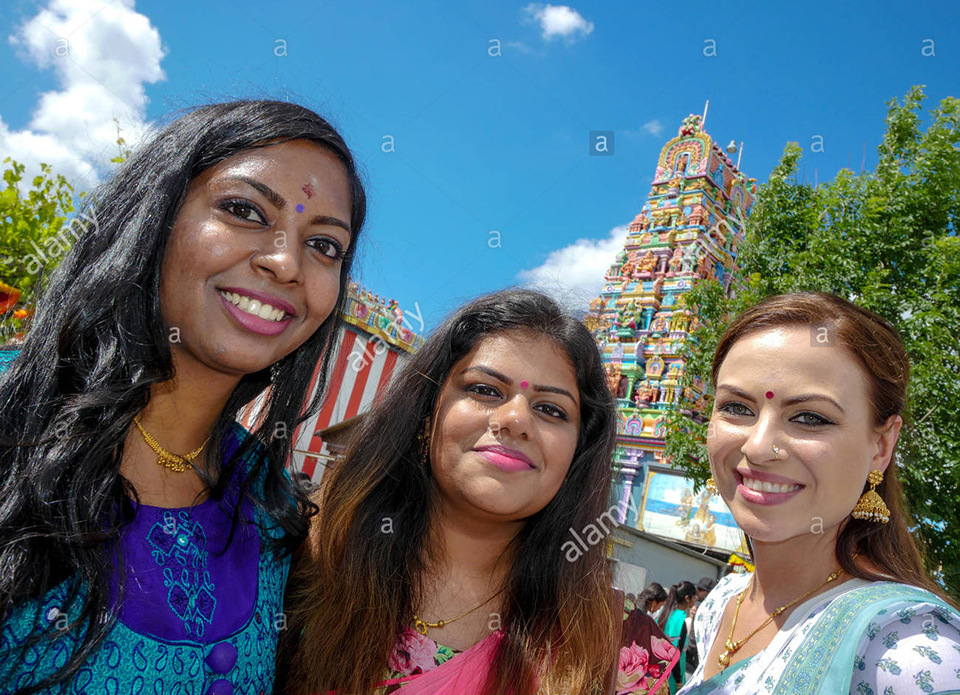Is it true that the German bus has Tamil signboards?
The actual picture is true but it does not mean that buses in Germany always run with Tamil signboards .
This particular picture has been taken at the busstation in town Hamm, North Rhine Westphalia, where there is the biggest Hindu temple of Dravidian architecture in the whole of Europe. During the annual temple car festival, an estimated 25,000 Tamil Hindus mainly of Srilankan ,and Indian origin from all over Europe gather here.

Located pretty far from the central train and bus stations, special buses for devotees to the temple have been temporarily arranged by the local government. Otherwise there is a bus scheduled every hour with signboards nothing but in German.
Tamil German or German Tamizhar refer to the German citizens of Tamil ethnic origins mainly from Sri Lanka, India and Malaysia apart from other parts of the world. Tamil migration to Germany which was mainly composed of Higher Education and Labor migrants increased in the late 1980s and onwards mainly due to the escalation of the Sri Lankan Civil War which saw tens of thousands of those belonging to the Tamil community fleeing the country and seeking asylum elsewhere abroad.The Tamil population figures in Germany currently range somewhere between 50,000-60,000.

It is found that most Tamils, irrespective of their Indian and Sri Lankan origins all tended to practice Hinduism and especially Shaivism. There are two well organized Hindu temples in the country – Sidhivinayagar Kovil and the Kamatchi Amman Kovil – both in the western city of Hamm since 1984.
The Kamatchi Amman Temple is arguably the most visible and best known Hindu Temple in Europe.The annual temple festival attracts some 15,000 visitors and has become a central pilgrimage place for Tamil Hindus all over Europe.

Additionally, since the late 1980s, Tamil Hindus founded numerous temples, numbering about 25 places of worship in early 2005. The temples are situated in cellars and flats, some in former warehouses and industrial halls. Apart from their religious importance for the carrying out of religious worship, life-cycle rituals and festivals, some of the temples also function as socio-cultural meeting points. A few temples have started to celebrate the annual temple festival with a public procession, thus bringing the gods and Hindu tradition to wider notice


















